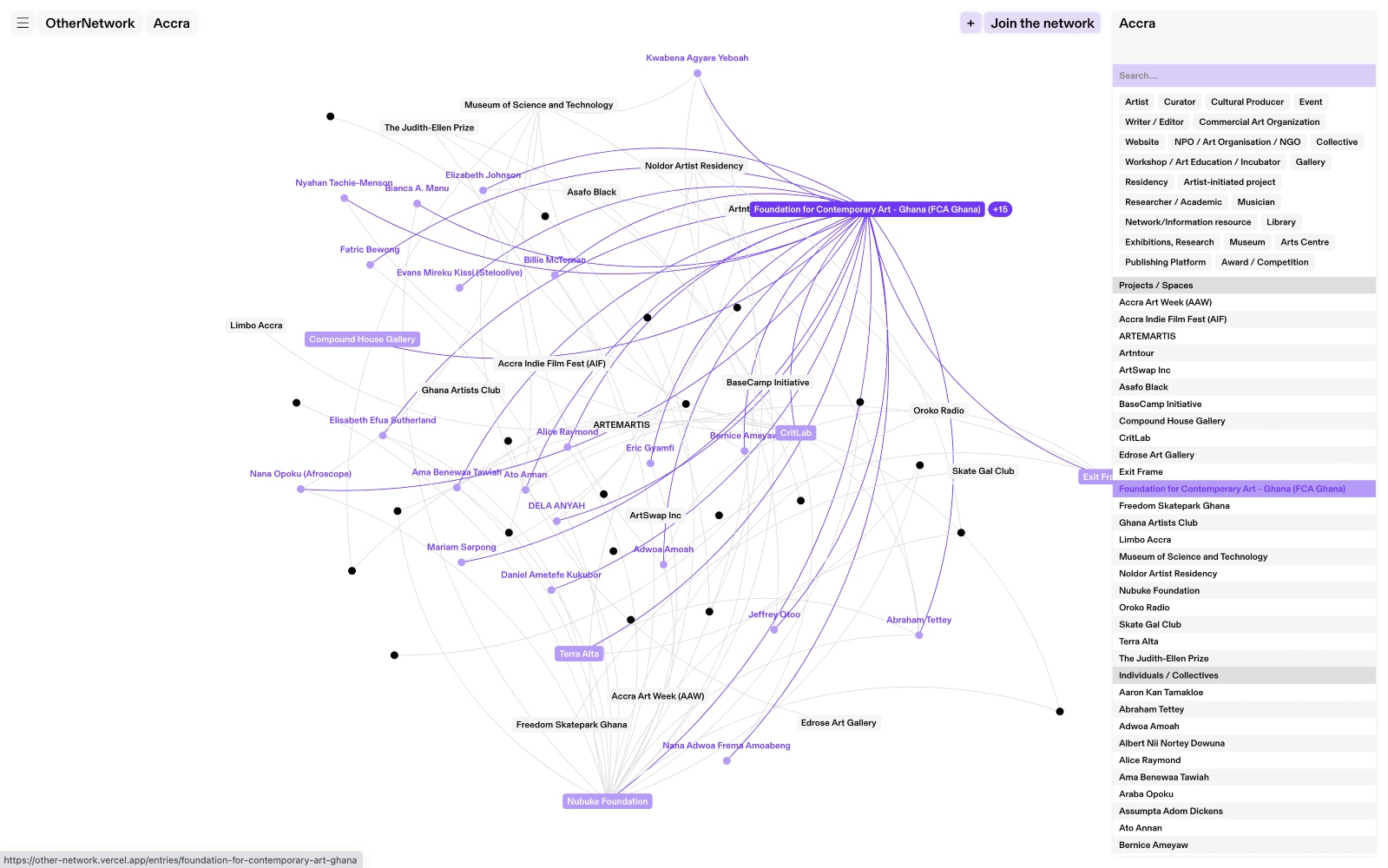
Established cultural institutions benefit from reliable funding and strong relationships with their international colleagues, and that in turn influences which artists and curators find success. But how do emerging organizations get there? And how can we support practitioners who are innately suspicious of national museums and the power structures they confer?
OtherNetwork is a new online platform that aims to connect independent artists and curators with alternative project spaces and venues, not only in their own region but across the globe. The non-hierarchical “network” has been designed to grow organically, with the first major push to recruit local partners taking place across sub-Saharan Africa.
At the moment, the network’s biggest hubs are Accra and Kumasi, both cities in Ghana, followed by Kinshasa in the DRC, Johannesburg in South Africa, and Nairobi in Kenya. Efforts are now going toward spreading this web further across the Global South into Latin America, with a small presence growing in various cities across Brazil, Colombia, Mexico, and Chile. Elsewhere, communities are also forming in Paris, Berlin, London, New York, and Rotterdam.
The idea was first hatched by Cookies, a design studio in Rotterdam, and Germany’s Institut für Auslandsbeziehungen (IFA), a federally-funded program that supports international cross-cultural exchange. Their unlikely collaboration sprung from the production of “Fragile,” an exhibition by Wolfgang Tillmans presented in partnership with IFA that toured across eight cities in Africa between 2018 and 2022. A long-time collaborator of Tillmans’s, Federico Martelli of Cookies designed the show for each location, and took the opportunity to explore the continent’s bustling art scene.
“Something that we wanted to avoid was just arriving and unpacking boxes and doing an exhibition that has no relationship to the context,” he recalled. “One of my roles was to do research into the local art and activist communities.” By the end he was left with a stacked rolodex of new contacts.
“We also noticed that in places that are unstable politically, most artists are skeptical about official museums being a propaganda machine,” he added. This observation that many artists were actively seeking out the chance to work with independent art organizations of the type that don’t often have a high international profile, spurned the founders into action.
The network can be easily navigated by phone or computer, with cities represented as major hubs that can be entered with a click so that users can toggle between the global and local picture. Nodes are used to signify organizations, foundations, and venues or individuals and collectives, with each link representing some kind of project or event. Though the data has been organized according to its location, there is no further geographical framework underpinning the shape of the network.
“Initially, our idea was that it would be much more geographic, but then we had this realization that if we keep this structure we’re imposing the same narratives,” Martelli explained. “So we freed ourselves from geography and let these nodes exist more fluidly.”
One collaborator who has helped OtherNetwork grow in Johannesburg and elsewhere on the continent is freelance curator and project manager Samantha Modisenyane, whose outreach takes place online and via social media, as well as IRL. “On the ground, you get a more real understanding of how the art scene in each city looks, so we’ve decided to put more effort into meeting people and doing research on site,” she said.
So far, she feels driven by the importance of connecting artists from different countries and giving them better opportunities for free self-expression. “I met people from Accra who I don’t think I’d have otherwise known or worked with,” she recalled of an opening in Stuttgart, Germany last year, which was organized via the network. “Its been a conversation with the people that I’ve been spending time with lately that institutions have their own expectations, requirements, and deadlines. The places that allow organic growth and development for artists are independent spaces where the only obligation is to create.”